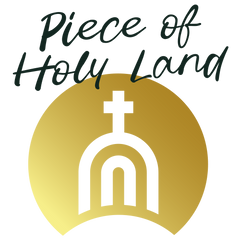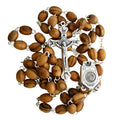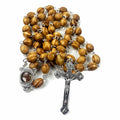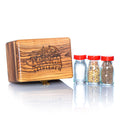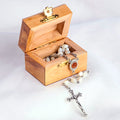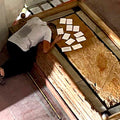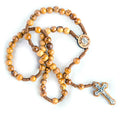The Forgotten Symbols of Christianity: Rare Crosses and Their Meanings
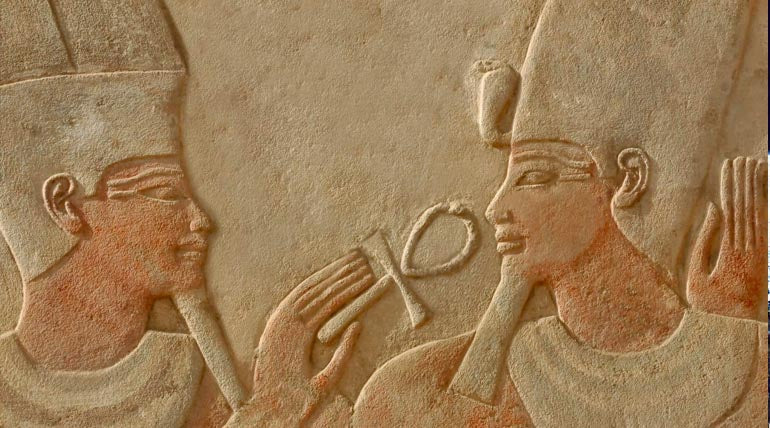
Exploring Ancient and Lesser-Known Christian Crosses and Their Spiritual Significance
Rediscovering the Lost Symbols of Christianity
Throughout history, the cross has stood as the most powerful symbol of Christianity, representing Christ’s sacrifice, resurrection, and eternal love. While many believers are familiar with the Latin Cross, Jerusalem Cross, and Orthodox Cross, there exists a wide variety of lesser-known Christian crosses, each carrying a rich theological and historical significance.
These forgotten symbols provide a deeper understanding of Christianity’s evolution, connecting believers to early traditions and lost forms of devotion. Whether seen in ancient carvings, medieval manuscripts, or sacred relics, these crosses serve as visual testaments to faith and tradition. Some were used as secret symbols during times of persecution, while others developed as artistic expressions of theological concepts.
Let’s explore some of the rarest and most meaningful crosses that have shaped Christian history.
The Budded Cross: The Symbol of the Apostles
The Budded Cross, also known as the Apostles’ Cross, is characterized by trefoil (three-lobed) ends on each arm. These buds represent:
-
The Holy Trinity (Father, Son, and Holy Spirit)
-
The three theological virtues (Faith, Hope, and Charity)
-
The Twelve Apostles, reinforcing the foundation of the early Church
This cross was widely used in medieval Christian art and architecture, emphasizing the mission of the Apostles to spread the Gospel. The Budded Cross remains a popular symbol in liturgical vestments, church decorations, and religious jewelry. It is also associated with Eastern Orthodox iconography, where it represents spiritual growth and enlightenment.
The Canterbury Cross: A Relic of Anglo-Saxon Christianity
Originating in 8th-century England, the Canterbury Cross is an exquisite symbol of the early Anglo-Saxon Christian faith. This cross is defined by its:
-
Rounded, equal-length arms forming a square shape
-
Engraved central medallion, often featuring Christian iconography
-
Connection to the Canterbury Cathedral, a historic Christian pilgrimage site
The Canterbury Cross represents unity, Christ’s eternal presence, and the enduring strength of the early Church. It is commonly found in British Christian art, cathedrals, and personal devotional items. This cross has also been adopted as a symbol of Anglican identity, particularly in the Church of England.

The Staurogram: The Oldest Depiction of the Crucifixion
One of the earliest symbols used by Christians, the Staurogram (⳨), predates artistic representations of Christ on the cross. It is a combination of the Greek letters T (Tau) and P (Rho), forming an early pictogram of Jesus crucified.
Historically, the Staurogram was used in:
-
Early Christian manuscripts (such as the 3rd-century Bodmer Papyri)
-
Church inscriptions as a secret symbol of faith
-
Christian relics and archaeological findings
This cross serves as a bridge between Jewish and early Christian symbolism, linking the crucifixion with sacrificial atonement and divine redemption. It is a precursor to the later crucifix depictions found in medieval Christian art.

The Chi-Rho with Alpha and Omega: The Victory of Christ
The Chi-Rho (☧) is one of the most recognizable early Christian symbols, but when combined with the Alpha (Α) and Omega (Ω), it takes on a deeper theological meaning.
-
Chi (Χ) and Rho (Ρ) are the first two letters of Christos (Greek for Christ)
-
Alpha and Omega symbolize Christ as the Beginning and the End, referencing Revelation 22:13: “I am the Alpha and the Omega, the First and the Last, the Beginning and the End.”
Emperor Constantine the Great adopted the Chi-Rho as his battle standard after receiving a divine vision before the Battle of Milvian Bridge in 312 AD. This led to the Christianization of the Roman Empire and the rise of Christianity as a major world faith.
The Chi-Rho with Alpha and Omega is still found in church mosaics, priestly garments, and sacred artifacts, representing the ultimate victory of Christ over sin and death. It is particularly common in Orthodox and Catholic churches, where it decorates vestments, chalices, and altars.

The Ankh Cross: The Coptic Christian Key of Life
The Ankh Cross (☥), originally an Egyptian symbol of life, was later adopted by Coptic Christians to represent eternal life through Christ. This adaptation made it a bridge between ancient Egyptian spirituality and Christian theology.
Key features of the Ankh Cross include:
-
A loop at the top, symbolizing the divine and eternal life
-
A cross shape, linking it to Christian salvation
-
Use in Egyptian Christian tombs, churches, and religious icons
The Coptic Church, one of the oldest Christian communities, continues to use the Ankh Cross in liturgical artifacts, church decorations, and Christian jewelry. Some Coptic priests wear an Ankh Cross embroidered on their vestments, symbolizing Christ as the source of all life.

The Russian Orthodox Cross: The Cross with Three Bars
A distinctive cross used in Russian Orthodox Christianity, this cross features:
-
Three horizontal bars, symbolizing Christ’s crucifixion
-
The top bar represents the inscription placed above Jesus' head (INRI)
-
The middle bar is where His hands were nailed
-
The slanted bottom bar represents the footrest, tilted to signify the repentant thief ascending to heaven and the unrepentant thief descending
-
The Russian Orthodox Cross is an important symbol in Slavic Christianity, religious art, and Orthodox liturgical vestments. It often appears on church domes and in Orthodox Christian iconography.

The Celtic Cross: A Symbol of Christian and Pagan Fusion
The Celtic Cross is distinguished by its iconic circle surrounding the intersection of the crossbars, blending Christian and pre-Christian elements. This cross symbolizes:
-
The eternal nature of God
-
The fusion of early Irish spirituality with Christianity
-
The balance between the earthly and spiritual realms
The Celtic Cross is widely used in Ireland and the British Isles as a symbol of heritage and faith. It is commonly found in cemeteries, where it represents eternal life in Christ.

Reflection and Takeaway: Embracing the Sacred Symbols of Christianity
Christian history is filled with beautiful and meaningful crosses, many of which have been forgotten over time. These symbols are more than just decorative elements; they carry deep theological messages and represent Christianity’s diverse traditions.
By understanding these rare crosses, believers can connect with ancient Christian traditions, strengthen their faith, and appreciate the evolution of Christian symbolism. These sacred symbols remain relevant in modern Christian art, jewelry, and devotional practices.
For those looking to incorporate these symbols into their spiritual life, explore our handcrafted olive wood crosses and unique Christian necklaces inspired by these historic designs.
Discover our Guide to Christian Crosses Collection and bring home a piece of Christian history today!
SHARE:

